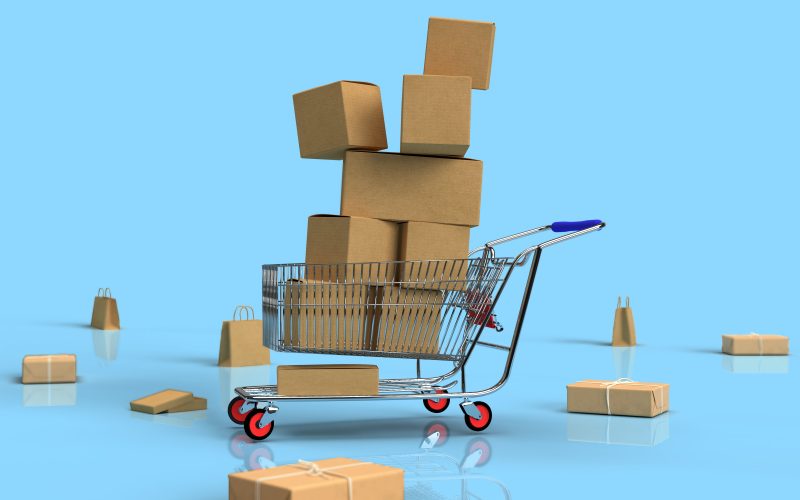In the age of digitalization, traditional brick-and-mortar stores are facing fierce competition from online retailers. However, with the rise of Online-To-Offline (O2O) strategies, these physical stores are now able to level up their game and compete more effectively in the marketplace. O2O is a new trend that bridges the gap between offline and online retail channels by integrating them seamlessly into one another. In this blog post, we will explore how O2O is changing the game for traditional brick-and-mortar stores, examine its benefits and success stories, and discuss what it means for the future of retailing. So buckle up and get ready to learn all about this exciting new strategy!
What is O2O?
Online-to-offline (O2O) is a marketing strategy that aims to bring customers from online channels to offline stores. It involves using digital platforms such as websites, social media, and mobile apps to promote products or services and then offering incentives for customers to visit physical stores. One of the most common O2O tactics is using coupons or promo codes that can only be redeemed in-store.
By bridging the gap between online and offline channels, O2O strategies allow retailers to provide a more seamless experience for their customers. For example, a customer may browse products on an e-commerce website but prefer to try them out in person before making a purchase. With O2O, they can do both – view the product online and go into the store for hands-on interaction.
Another advantage of O2O is its ability to track customer behavior across multiple channels. Retailers can collect data on how customers engage with their brand both digitally and physically, allowing them to personalize future interactions accordingly.
Online-To-Offline (02o) has revolutionized traditional brick-and-mortar retailing by combining it with digital marketing strategies. Through this integration of offline/online platforms combined with personalized experiences offered by retailers are increasing conversions while improving consumer satisfaction at every level!
The Benefits of O2O
Online-to-offline (O2O) is a business model that connects online platforms with brick-and-mortar stores. It has become increasingly popular in recent years as more consumers seek the convenience of shopping online while still enjoying the benefits of physically experiencing products before purchasing them.
One significant benefit of O2O is increased foot traffic to physical stores. By offering promotions and discounts exclusively for in-store purchases made through an online platform, retailers can lure customers into their store locations. Once there, these customers are more likely to make additional purchases or even return again in the future.
Another advantage of O2O is improved customer engagement and loyalty. Through personalized recommendations based on a shopper’s browsing history or purchase behavior, businesses can create targeted marketing campaigns that foster long-term relationships between brands and consumers.
Additionally, O2O enables retailers to collect valuable data about consumer behavior both online and offline. This information provides insights into what products are popular among different demographics and how they prefer to shop – allowing businesses to optimize their inventory accordingly.
By integrating technology into traditional retail spaces via mobile payment options or interactive displays, O2O creates a seamless shopping experience that combines the best aspects of e-commerce with those of brick-and-mortar retail.
It’s clear that adopting an O2O strategy offers numerous benefits for traditional brick-and-mortar stores looking to stay competitive in today’s digital age.
How O2O is Changing the Retail Industry
The rise of online shopping has been a major disruptor in the brick-and-mortar retail industry. However, with the emergence of Online-To-Offline (O2O) marketing strategies, traditional stores are now finding ways to adapt and stay relevant.
One way O2O is changing the game for brick-and-mortar retailers is through increased customer engagement. By utilizing digital platforms such as social media and mobile apps, retailers can reach out to customers in real-time and offer personalized experiences that were once only available online.
Another benefit of O2O is the ability for retailers to track consumer behavior both online and offline. This data helps them understand their target audience better and make informed decisions about inventory management, store layouts, and marketing campaigns.
Perhaps one of the most significant impacts of O2O on retail is the blurring line between physical and digital channels. Customers can now seamlessly transition from browsing products online to making purchases in-store or curbside pickup without missing a beat.
O2O has allowed brick-and-mortar retailers to bridge the gap between their physical storefronts and digital presence. As technology continues to evolve, it will be interesting to see how businesses continue innovating with these strategies.
Case Studies: Successful Implementations of O2O
Successful companies have implemented O2O strategies and achieved remarkable results. One such company is Starbucks, which introduced its Mobile Order & Pay feature in 2015. The feature allows customers to order ahead of time using the Starbucks mobile app and pick up their orders at a designated store location. This has greatly reduced wait times and increased customer satisfaction.
Another example is Walmart, which launched its Online Grocery Pickup service in 2014. Customers can place grocery orders online and pick them up at the nearest Walmart store without having to leave their cars. This has not only improved convenience for customers but also increased foot traffic to physical stores.
Nike is another company that successfully implemented O2O by creating an interactive shopping experience with its flagship store in New York City. Customers can use Nike’s mobile app to scan product codes, receive personalized recommendations, and purchase products on-site or online for home delivery.
These success stories demonstrate how O2O strategies have transformed traditional brick-and-mortar stores into innovative omni-channel retailers that provide convenient experiences for customers both online and offline.
The Future of O2O
The future of O2O is incredibly bright, and it’s only going to get better as technology advances. One of the most exciting developments in this area is the rise of augmented reality (AR) and virtual reality (VR) experiences. These technologies allow customers to try on clothes or see how furniture would look in their home without ever leaving their house.
Another trend that we’re likely to see more of in the future is increased personalization. By using data from online interactions, brick-and-mortar stores can offer customized promotions and recommendations based on a customer’s preferences and past purchases.
Mobile payments will also become even more prevalent with O2O. Customers will be able to seamlessly purchase items through an app while they’re browsing in-store, eliminating the need for long checkout lines.
Social media platforms are becoming increasingly important for O2O strategies. Retailers can use these channels not just for advertising but also as a way to engage with customers directly by offering personalized advice or responding quickly to complaints.
There are many exciting possibilities ahead for O2O as technology continues to evolve and retailers find new ways to connect with customers both online and offline.
Conclusion
In today’s fast-paced digital world, Online-to-Offline (O2O) has become a game-changer for traditional brick-and-mortar stores. By integrating offline and online channels, businesses can offer their customers a seamless shopping experience that drives traffic to physical stores while increasing online sales.
The benefits of O2O are clear – increased customer engagement, higher conversion rates, and greater brand awareness. By implementing O2O strategies such as click-and-collect or in-store pickup options, retailers can provide convenience and personalized experiences to their customers.
Case studies have shown how successful implementations of O2O have improved revenue growth for many large retail chains. Companies like Walmart and Target have leveraged O2O to expand their customer base while driving foot traffic into their physical locations.
As technology continues to evolve at a rapid pace, it is clear that the future of retail lies in the hands of those who embrace innovative solutions like O2O. In this increasingly competitive landscape, retailers must adapt by leveraging new technologies that enhance the customer experience across all touchpoints.
Online-to-Offline (O2O) is changing the game for traditional brick-and-mortar stores by providing an integrated shopping experience that delivers results. Whether you’re looking to increase your sales or drive foot traffic into your store location, implementing O2O strategies will ensure that your business stays relevant in today’s ever-changing retail environment.












